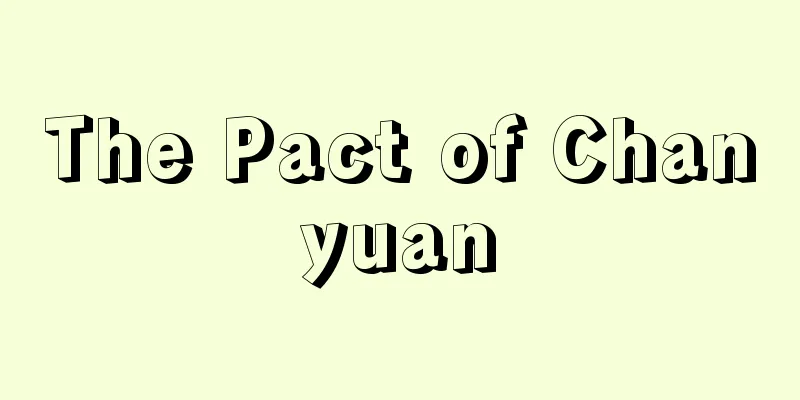Green manure

|
It has been used since ancient times as fertilizer, by plowing raw grass and leaves into the soil. The plant matter that is plowing into the soil is broken down by microorganisms, and the nutrients are activated and absorbed and used by the crops. There are two types of green manure: wild grass green manure, which uses grass that grows naturally, and cultivated green manure, such as milk vetch, which is cultivated as a second crop in rice paddies and plowing into the soil. Until the early Meiji period, wild grass green manure was the main type of green manure, and it was during the Taisho and Showa periods that cultivated green manure became widely used. Today, the term refers to cultivated green manure. There are many types of plants that are used as green manure, but using legumes such as milk vetch, clover, and green-cut soybeans can replenish nitrogen and reduce the amount of nitrogen fertilizer. Large, fast-growing crops such as corn and sorghum are used to replenish organic matter. Marigolds also help prevent nematodes. At one time, the cultivation of milk vetch and green soybeans as green manure was popular to save on fertilizer costs, but after World War II, the production of commercially available fertilizers recovered and the number of green manures used dropped sharply. However, green manure is being reconsidered in organic farming, which maintains soil productivity and avoids disease. When using green manure, it is necessary to allow a period of time between plowing the green manure crop into the soil and planting to allow the green manure crop to decompose sufficiently. [Yuki Koyama] "Mastering Green Manure" by Ken Hashizume (1995, Rural Culture Association) [References] | | | | |Source: Shogakukan Encyclopedia Nipponica About Encyclopedia Nipponica Information | Legend |
|
生(なま)のままの草や木の葉などを肥料として土の中に鋤(す)き込むもので、昔から利用されてきた。鋤き込まれた植物体は、土壌中で微生物により分解されて養分が有効化し、作物に吸収、利用される。自然に自生している草を利用する野草緑肥と、レンゲなどのように水田の裏作に栽培し鋤き込んで利用する栽培緑肥とがある。明治初期までは緑肥の主体は野草緑肥で、栽培緑肥が盛んに用いられるようになったのは大正・昭和の時代になってからである。現在ではこの栽培されたものをさす。緑肥に使われる植物には多くの種類があるが、レンゲ、クローバー、青刈りダイズなどマメ科の作物を利用すると窒素の補給となり窒素肥料を節減できる。また、有機物の補給の目的ではトウモロコシ、ソルガムなど生育の旺盛(おうせい)な大きな作物が利用される。また、マリーゴールドは線虫対策となる。一時は肥料代の節約から緑肥としてレンゲ、青刈りダイズの栽培が盛んであったが、第二次世界大戦後は販売肥料の生産回復によって急激に減少した。しかし、土壌生産力を維持し、病気を回避する有機農業で緑肥はふたたび見直されている。使用に当たっては緑肥作物を土に鋤き込んでから定植までの期間をあけて、緑肥作物を十分に分解させる必要がある。 [小山雄生] 『橋爪健著『緑肥を使いこなす』(1995・農山漁村文化協会)』 [参照項目] | | | | |出典 小学館 日本大百科全書(ニッポニカ)日本大百科全書(ニッポニカ)について 情報 | 凡例 |
>>: Pseudomonas aeruginosa - Ryokunoukin
Recommend
Hippocampus coronatus (English spelling) Hippocampuscoronatus
…[Isao Hanyu]. … *Some of the terminology that me...
Auction - Keito
〘Noun〙 Boat race. A boat race held in Nagasaki in ...
Dithizon (English spelling)
One of the most representative organic reagents. ...
Gyuichi Ohta
Year of death: Unknown (Year of death unknown) Yea...
Megijima Island
An island in the Bisan Seto Strait, north of Taka...
Land division - Warichijiwari
The term "chiwari" generally means simpl...
Usuki Castle Town
...Population: 36,614 (1995). Facing Usuki Bay, a...
Tajihi Island
Year of death: 21 July 1st of the Taiho Era (29 Au...
Turnèbe, A.
…French classical scholar. His real name is unkno...
Kinton - Kinton
〘noun〙① A type of dish. Sweetly boiled chestnuts, ...
conduction anesthesia
… [Local anesthesia] A method of numbing local se...
neon
Ne. Atomic number 10. One of the rare gas element...
Bocho Fudouchu Shinan - Bocho Fudouchu Shinan
A geographical map compiled by the Choshu (Hagi) ...
Wrinkles - wrinkles
〘noun〙① The surface of skin, paper, cloth, etc. be...
Masaji Kitano
...The Kwantung Army Epidemic Prevention and Wate...



![Oura [Hot Spring] - Oura](/upload/images/67cfbed09df6f.webp)





